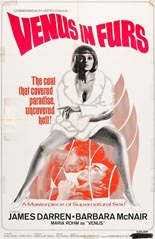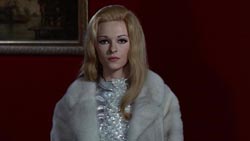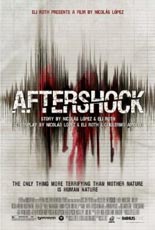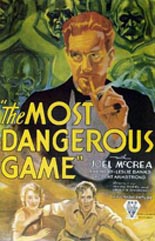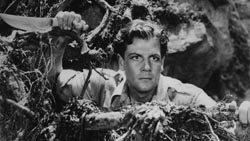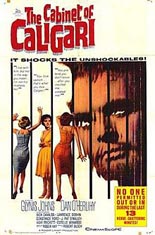
 With his Psycho-tic tendencies intact, Robert Bloch puts enough of his stamp on 1962’s The Cabinet of Caligari that it feels less like a remake of the German Expressionist classic of four decades prior, The Cabinet of Dr. Caligari, and more like an in-name-only extension of the earlier work’s themes.
With his Psycho-tic tendencies intact, Robert Bloch puts enough of his stamp on 1962’s The Cabinet of Caligari that it feels less like a remake of the German Expressionist classic of four decades prior, The Cabinet of Dr. Caligari, and more like an in-name-only extension of the earlier work’s themes.
Written by Bloch, but directed by workmanlike TV veteran Roger Kay, the thriller switches genders to make a woman the focus. While on a carefree drive, Jane (Glynis Johns, The Vault of Horror) experiences a flat tire and is forced to walk miles to the nearest home. It’s a beaut, too — an architectural marvel belonging to one Dr. Caligari, a weird-looking dude with Abe Lincoln-style facial hair, a revolving door leading into his office, a penchant for peeping and many, many probing questions about Jane’s sexual life, history and desires.
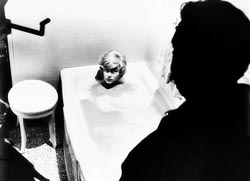 If she could up and leave, she would, but she’s trapped on his gated estate. She finds a sympathetic ear in Caligari’s friend, Paul (Dan O’Herlihy, RoboCop), but no means of escape. The place even has a garden maze with a fierce dog for a Minotaur. It’s enough to make her think Caligari intends to drive her insane.
If she could up and leave, she would, but she’s trapped on his gated estate. She finds a sympathetic ear in Caligari’s friend, Paul (Dan O’Herlihy, RoboCop), but no means of escape. The place even has a garden maze with a fierce dog for a Minotaur. It’s enough to make her think Caligari intends to drive her insane.
The 1920 Caligari is remembered for its surreal sets, which Bloch and Kay do without until a third-act nightmare sequence; to no one’s surprise, it proves the highlight. With an assumedly low budget and first-time feature director, this update literally can’t afford to submit fully to the abstract visuals, so the amount it does offer is welcome without embarrassing itself.
Thus, the film stands on story (and a thoroughly amusing performance by Johns, who was far from the typical Hollywood starlet). It may not always click, but at least it’s about something — and about as far as they were allowed to take it for the times. That alone is admirable. —Rod Lott
Buy it at Amazon.
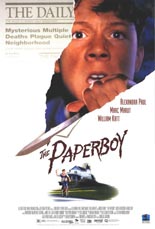
 As Johnny McFarley, the psycho preteen of The Paperboy, Marc Marut gives what may be the single worst performance ever by a child actor.
As Johnny McFarley, the psycho preteen of The Paperboy, Marc Marut gives what may be the single worst performance ever by a child actor. 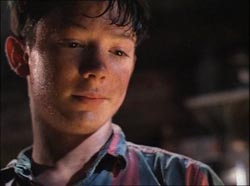 In one scene, Melissa comes home to find Johnny in her kitchen:
In one scene, Melissa comes home to find Johnny in her kitchen: 
